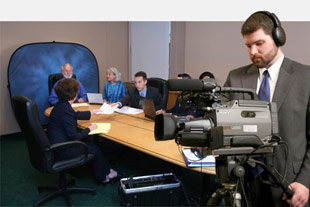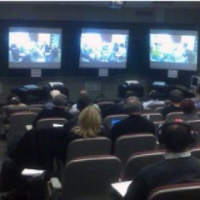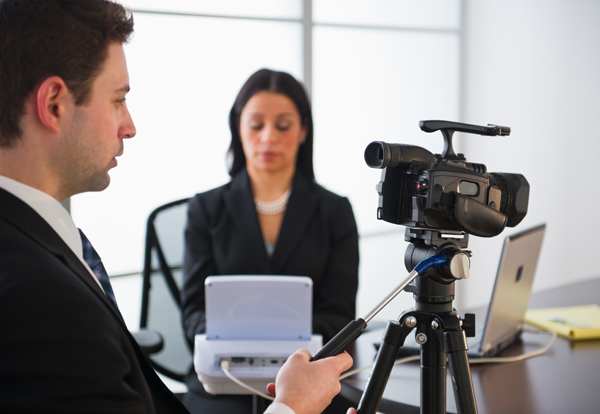Why Legal Videography Plays a Crucial Role in Modern Legal Practices
Why Legal Videography Plays a Crucial Role in Modern Legal Practices
Blog Article
Why Legal Videography Is Essential for Accurate Court Recordings
The role of lawful videography in court room settings can not be overstated, as it offers as an important device for preserving the stability of court documents. The implications of integrating lawful videography right into basic court techniques raise vital questions regarding its more comprehensive effect on the lawful system.
Importance of Visual Evidence
In the realm of lawful proceedings, the relevance of visual proof can not be overemphasized. Aesthetic proof functions as a powerful tool in developing realities, proving testaments, and boosting the total clarity of a case. This type of evidence, that includes photos, videos, and diagrams, can offer a tangible context that verbal descriptions typically lack, consequently using courts and courts a more clear understanding of the conditions bordering an instance.
In addition, aesthetic proof help in the retention of info. Human cognition is inherently visual, and people are more probable to bear in mind and comprehend information presented in a visual format. In the court room, this can be crucial, as engaging aesthetic proof can guide opinions and reinforce the narrative offered by legal agents.
In addition, making use of aesthetic proof can lessen misunderstandings and obscurities that often develop from spoken exchanges. By offering a direct depiction of occasions, visual evidence helps to eliminate subjective analyses and cultivates a more objective examination of the realities. The integration of visual proof into legal procedures not just enhances the honesty of the judicial process yet likewise boosts the chance of achieving a just outcome.
Recording Non-Verbal Hints
Making use of advanced videography strategies can substantially boost the capture of non-verbal cues during lawful proceedings. Non-verbal communication, consisting of facial expressions, body movement, and eye call, plays a vital duty in conveying feelings and purposes that might not be clearly specified in verbal statement. legal videography. Lawful videography uses high-def cameras and critical angles to make sure that these refined cues are recorded with clarity and precision
The capacity to assess non-verbal habits can provide important context to declarations made during court sessions. A witness's hesitation or confidence can be translated with their stance or motions, possibly influencing the court's understanding of integrity. Additionally, making use of close-up shots can help concentrate on an audio speaker's expressions, allowing for a much more nuanced understanding of the testament.
In addition, integrating multiple cam angles can create a thorough view of communications, highlighting characteristics between events involved. This multifaceted method not just improves the precision of the court document however also help in maintaining the stability of the judicial process - legal videography. Inevitably, catching non-verbal hints through lawful videography promotes a richer, much more full depiction of courtroom proceedings

Enhancing Statement Integrity
The dependability of testimony can be significantly reinforced through the use of high-grade legal videography. Video recordings function as an objective tool that captures not only the spoken words of witnesses however also the subtleties of their delivery, consisting of tone, pacing, and psychological expressiveness. This diverse paperwork provides a clearer understanding of the witness's reliability and intents, which can be pivotal in legal process.
Moreover, legal videography Continue decreases the potential for misinterpretations that might arise from composed records alone. When jurors can observe a witness's demeanor and body language in combination with their testament, they are better geared up to examine the credibility and reliability of the evidence presented. This visual context can enhance the testimonial story, making it a lot more compelling and credible.
Additionally, the visibility of a video clip recording can hinder prospective variances in testament. Witnesses might be much more cautious in their statements when they understand they are being taped, leading to even more precise and truthful accounts. Generally, premium lawful videography improves the honesty of statement, making certain that the court has access to a complete and honest representation of the truths as communicated by the witnesses.
Supporting Appeals and Reviews
Legal videography plays a vital duty in supporting charms and evaluations by offering a detailed aesthetic record of courtroom procedures. This aesthetic documents catches not only the spoken words of witnesses and lawyers yet additionally the nuances of body movement, tone of voice, and courtroom characteristics. Such elements can be critical in understanding the context of statements and arguments provided.
In the appellate procedure, where the emphasis is on mistakes of legislation and step-by-step fairness, a video clip record can act as a vital device for appellate courts. It allows judges to assess the initial trial context, making sure that decisions are based upon a total understanding of the proceedings. The capacity to aesthetically assess the disposition of witnesses or the communications between parties can expose insights that composed records may ignore.

In addition, legal videography can assist in clarifying obscurities in testimonies or step-by-step rulings, therefore enhancing the basis for an allure. By providing a reputable, unbiased account of what transpired in court, legal videography not just supports the stability of the legal procedure yet also encourages all parties involved to make educated choices regarding their situations.
Streamlining Court Procedures
Enhancing court room performance, lawful videography streamlines processes by offering instant accessibility to aesthetic Clicking Here documents of procedures. This modern technology permits judges, attorneys, and juries to review critical statement and evidence, making certain that all events have a clear understanding of the situation. By catching the subtleties of verbal and non-verbal interaction, videography enhances the record, making it much easier to realize the context and weight of testaments.

Additionally, video clip recordings can help with remote engagement in hearings, enabling for description greater versatility in organizing and involvement, which is particularly valuable in intricate cases entailing multiple stakeholders.
Final Thought
Finally, lawful videography plays a vital function in ensuring precise court recordings by giving vital aesthetic evidence that catches both verbal and non-verbal interaction. This practice improves the integrity of testimonies, sustains appellate testimonials, and improves courtroom processes. By cultivating a detailed understanding of court room dynamics, legal videography inevitably adds to much more equitable judicial end results, reinforcing the integrity of the lawful system and helping with notified decision-making.
Report this page